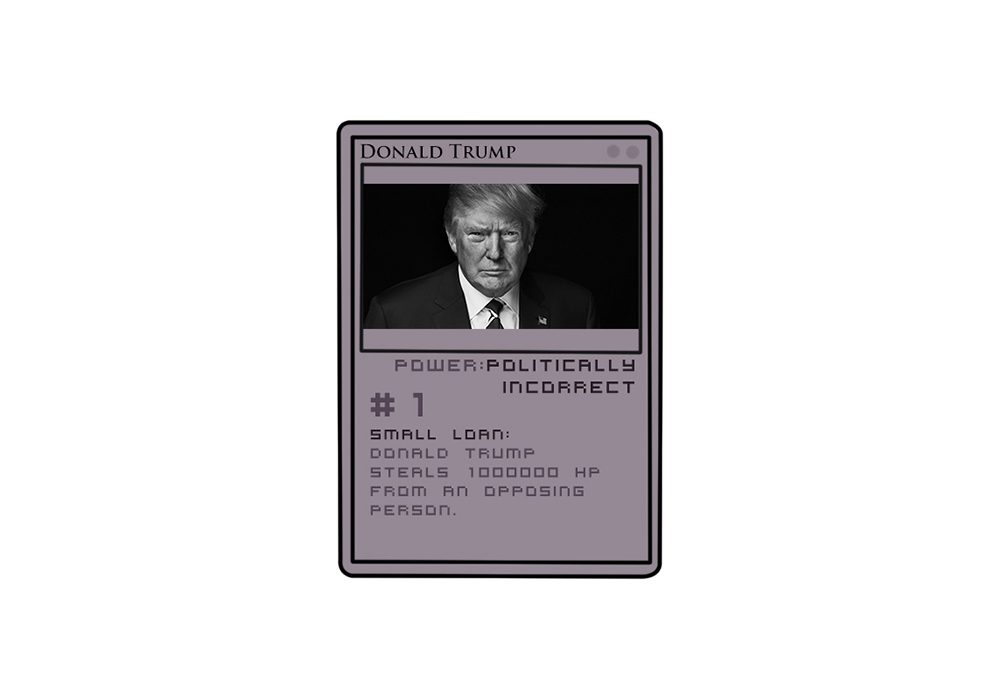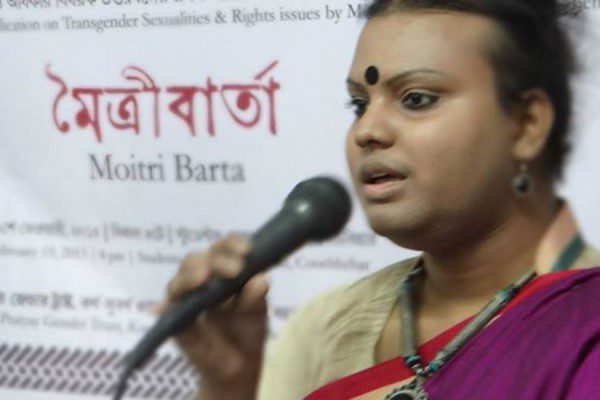Donald Trump has used a pliant media to come this far. But can he ride the wave to the White House, asks Pratiti Ganatra.
The various definitions of a trump card include: a valuable resource that may be used, especially as a surprise, in order to gain an advantage; something used to gain an advantage, sometimes a dishonest one; or an advantage that makes you more likely to succeed than other people, especially something that other people do not know about. You might or might not be interested in politics, you either read up or not on the American presidential elections, you debate and discuss or completely ignore the news, but there is a very slim chance you don’t know who Donald Trump is. And that is his trump card. The way he has utilised the media.
The United States presidential election of 2016, scheduled for 8 November, has pretty much taken centrestage since the spring of 2015, when the candidates announced their intention to run. It’s an arduous year-and-half-long process, where all eyeballs turn to see who the next so-called new leader of the free world will be. This particular election has, for more reasons than one, been one of the most hotly contested and one of the most widely debated elections of recent times. And the reasons for this are the candidates.
I remember discussing with my colleagues early last year when Trump had just announced his candidature, that it was such a joke. No one in his or her right mind would take this seriously. Or, so we thought. Well, that was a time when many of us actually believed that. And now, this is the time when Donald Trump is the presumptive nominee from the Republican Party. How has he come this far? How has a businessman with little/no political background become one of the top contenders for the post of the American President?
You might or might not be interested in politics, you either read up or not on the American presidential elections, you debate and discuss or completely ignore the news, but there is a very slim chance you don’t know who Donald Trump is. And that is his trump card.
The Harvard Kennedy School’s Shorenstein Center on Media, Politics and Public Policy has analysed the news coverage of the presidential candidates of the 2016 elections in the year leading up to the primaries. According to political scientists, this period, which they label as “the invisible primary”, is where the foundation is laid, and depending on the coverage the candidate gets during this period, his/her momentum is accelerated or decelerated. “In the early going, nothing is closer to pure gold than favourable free media exposure,” says Thomas E Patterson, Bradlee Professor of Government and the Press. But there is a catch here. Journalists/newsmakers prefer candidates who are at the top of the polls of their respective parties and they end up getting more coverage. On the other hand, the candidates who have lower ratings do not get enough coverage to move up in polls. It is what you call a vicious circle. But if we look at Trump’s case, it was an entirely different story. He was not polling as high as what his free media numbers would ordinarily suggest.
Historically, earned media, which is news and commentary about the candidate on print, electronic and social media edges over paid media in all campaigns. mediaQuant, a firm that calculates the dollar value of the news coverage of each candidate based on advertising rates, has found out that since May last year, Donald Trump has received free advertising corresponding to the value of $3 billion. Just to put this in comparison, his biggest rival Hillary Clinton received free press equivalent to $1.1 billion in that time. Early last September, Trump actually acknowledged this huge advantage and said that, “I’ve gotten so much free advertising, it’s like nothing I’d have expected. When you look at cable television, a lot of the programs are 100 percent Trump, so why would you need more Trump during the commercial breaks?”
The numbers are staggering and you can’t help but wonder why the media gave Trump the amount of attention they did. Ted Cruz, who dropped out of the race earlier this year and received a comparatively meagre $771 million in unpaid advertising/media, told CNN host Anderson Cooper that “the media was engaged in a love fest” with Trump. In fact, CBS CEO Leslie Moonves at a conference in March, said of Trump’s candidacy, “It may not be good for America, but it’s damn good for CBS…The money’s rolling in and this is fun.” And perhaps it was this ratings game, which brought in so much money for the networks, which gave Trump the edge—his 90-minute long rallies were covered without breaks; wherever he went, the camera crews followed, and whatever he said became top headlines.
There have been a few voices of concern as well from within the media fraternity, who have condemned the role of the media in Trump’s meteoric rise. Katie Couric, a former Today Show host who went on to anchor CBS Evening News and then host her own talk show, told David Axelrod on The Axe Files, a podcast produced by CNN and the University of Chicago Institute of Politics, that TV news networks were significantly valuable in “enabling” Donald trump’s candidacy. She argues that not many in the media really made an effort to dig deep and find out why and what were the forces that were giving rise to his ascent “either because of his railroading or because there was a lack of willingness to ask really tough questions for fear of cutting off access.” And it is not just Couric who has had this prick in her conscience. The New York Times’ Nicholas Kristof declared Trump’s candidacy his “shared shame”, arguing that “the media made Trump”, while the paper’s media critic, Jim Rutenberg, diagnosed a massive journalistic failure. He believes that it was a failure on the part of the entire national political journalism fraternity who, instead of trying to help make sense of an already confusing and chaotic election season, gave ratings and ad sales undue importance.
But then there have also been those who have pointed to other causes for Trump’s exorbitant free media. Don Lemon of CNN says that the media doesn’t really deserve blame for how much Donald Trump has dominated the media—his campaign rivals do. To some extent, there is validity in what Lemon is trying to say. Trump has above and beyond all his rival candidates agreed to countless more interviews than they have. He has appeared on numerous prime time entertainment talks shows, the likes of The Tonight Show With Jimmy Fallon and Jimmy Kimmel Live, who have massive ratings. These shows have in the past, time and time again made jokes on Trump, have had hosts play caricatures and parodies of him, but that did not deter him; he went on all these shows to make his presence felt. Trump, who had no sort of presidential credentials when he began his campaign, used the “politics of outrage”, as Patterson calls it, and the media was his compliant ally.
However, has the media been unbiased in their coverage of Trump? Robert Scheer, Editor in Chief of Truthdig, thinks not. “The mainstream media, led by the New York Times, has dropped any pretence of objectivity in covering the Trump phenomena,” he says. But one would think that it matters whether the tone of the level of exposure he has received is positive or negative or neutral. You may, however, be surprised by the findings of Crimson Hexagon, a social media software analytics company based out of Boston. They took more than 170,000 posts by various top ranking media outlets such as The Washington Post, Politico, Fox News, The Huffington Post and CNN, and found that more negative stories were published about Hillary Clinton than any other presidential candidate—including Donald Trump—from January 2015 to April 2016. This may have something to do with the constant mention of Hillary Clinton’s private email server, but what this did was it took some of the heat away from Trump, who then continued on with his agenda.
A study by Media Tenor found that only 12 percent of Trump’s coverage addressed his issue stands and political beliefs. Most of what was reported about Trump was in the context of the horse race and campaign activity, and was framed around his move to the top. Such coverage accounted for 56 percent of Trump’s coverage and, of it, 79 percent was favourable in tone.
Why was the press so favourable to Trump? Everyone loves the story of an underdog. And although at this point, it is difficult to imagine Trump as an underdog, when he began his campaign he was one. He came from the back of the pack and started gaining ground pretty soon. Now for the media, such a story of a candidate suddenly gaining so much ground so soon is pretty inspiring and positive, and they played it on and on, over and over again. A study by Media Tenor confirmed this. It found that only 12 percent of Trump’s coverage addressed his issue stands and political beliefs. Most of what was reported about Trump was in the context of the horse race and campaign activity, and was framed around his move to the top, a positive storyline that was uninterrupted except for a brief drop in the polls following remarks that he would require all Muslims in the United States to register with the federal government. Such coverage accounted for 56 percent of Trump’s coverage and, of it, 79 percent was favourable in tone.
The question remains whether Donald Trump is going to ride this wave all the way to The White House. Is his “Trump card” going to be his ticket to the presidency? This strategy worked well when there were a multitude of candidates in the early stages and attention-grabbing techniques could be seen left, right and centre. But now, with only two of them left in the fray, this could prove to be tricky. Just like him, his opponent could also just as easily get free media, and she is doing that. Plus, it also helps that Clinton has an exorbitant paid advertising scheme planned ahead of her leading right up to Election Day.
Alex Shephard, news editor at The New Republic, reiterates this. “Trump,” he says, “thought that he could cheap-out on the election and conduct an insurgent national campaign—that he could win with only rallies and tweets and television appearances.” But “everything Trump says is backfiring now, but he keeps doing it because he knows no other strategy.” Political enthusiasts can only wait and watch to see Trump is able to reverse this trend, and develop a new strategy as he moves into the final stages of his campaign, one which does not rely solely on the free media coverage from our friends in the American media circles.














